When it comes to checking tire tread, there are a number of methods that can help you know if it’s time to replace a tire. Heavily worn tread will prevent a tire from performing as designed and can lead to unsafe driving conditions. One of the simplest, most common ways to check tread depth requires nothing more than a penny and a few moments of your time.
In the United States, tire tread depth is measured in 32nds of an inch. New tires typically come with 10/32” or 11/32” tread depths, and some truck, SUV and winter tires may have deeper tread depths than other models. The U.S. Department of Transportation recommends replacing tires when they reach 2/32”, and many states legally require tires to be replaced at this depth.
The idea of the penny test is to check whether you’ve hit the 2/32” threshold. Here’s how it works:
Place a penny between the tread ribs on your tire. A “rib” refers to the raised portion of tread that spans the circumference of your tire. Tire tread is composed of several ribs.
Turn the penny so that Lincoln’s head points down into the tread.
See if the top of his head disappears between the ribs. If it does, your tread is still above 2/32” , If you can see his entire head, it may be time to replace the tire because your tread is no longer deep enough.
When performing the penny tire test, remember not only to check each tire, but to check various places around each tire. Pay special attention to areas that look the most worn. Even if parts of your tread are deeper than 2/32”, you should still replace the tire when any areas fail the penny test.
Consistent wear around the whole tire is normal, but uneven tread wear could be a sign of improper inflation, wheel misalignment, or a variety of other things. If you see uneven tread wear, you should have a technician inspect your vehicle.
A simple way to check your tire tread depth is by using a tread depth gauge. You can find tire tread depth gauges at your local auto parts store. There are many models available, but an inexpensive simple graduated probe gauge will work just fine. All you have to do is stick the probe into a groove in the tread and press the shoulders of the probe flat against the tread block and read the result. All gauges should measure in both 32nds of an inch and millimeters.
You can find tire tread depth gauges at your local auto parts store. There are many models available, but an inexpensive simple graduated probe gauge will work just fine. All you have to do is stick the probe into a groove in the tread and press the shoulders of the probe flat against the tread block and read the result. All gauges should measure in both 32nds of an inch and millimeters.
Another indicator of worn out tread already lives in your tires themselves. Every performance, light truck, or medium commercial tire comes equipped with indicator bars (or wear bars) embedded between the tread ribs at 2/32”. They’re there to help you monitor tread depth and make decisions about tire replacement. Just look to see if the tread is flush with the indicator bars. If they are, it’s time to replace the tire.
While the penny tire test does deliver on what it promises – indicating whether tread has reached the legal limit – it may not be the best indicator of whether your tires are safe for the road.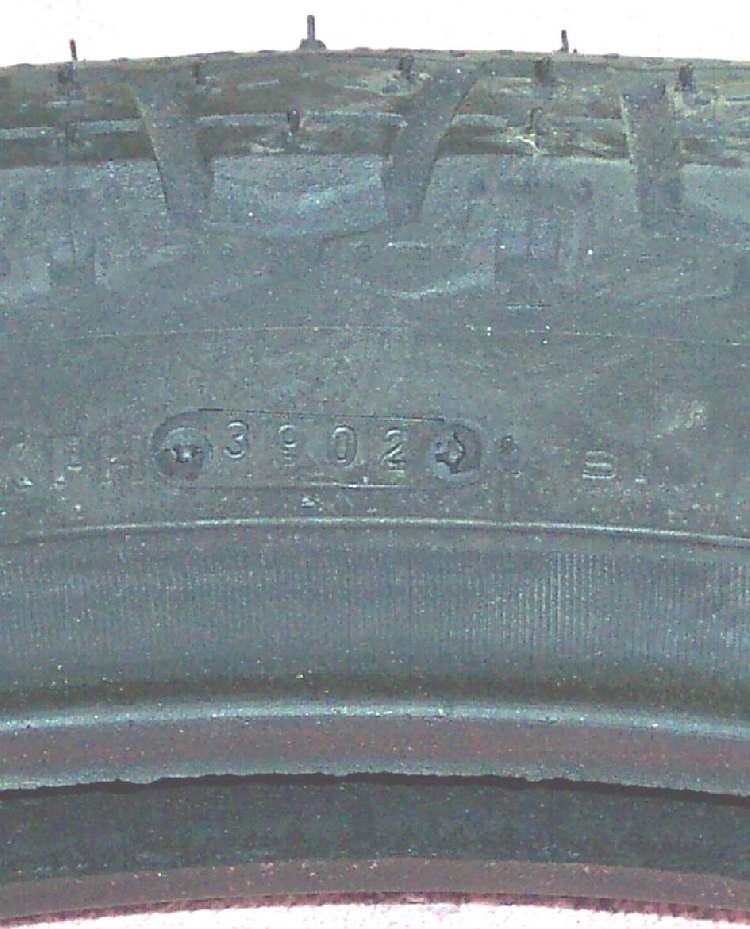 Tire performance can diminish significantly before your tread hits 2/32”. Even though the law deems fit for safe driving may not prevent you from hydroplaning or losing control in rainy, slushy conditions. If you think your tires may be close to needing replacement, have them checked out by a licensed mechanic.
Tire performance can diminish significantly before your tread hits 2/32”. Even though the law deems fit for safe driving may not prevent you from hydroplaning or losing control in rainy, slushy conditions. If you think your tires may be close to needing replacement, have them checked out by a licensed mechanic.
Calculate Out-The-Door Price
close
With this easy test, a penny can buy you peace of mind when it comes to your tires and safety.
Place a penny head first into several tread grooves across the tire. If you always see the top of Lincoln’s head, your treads are shallow and worn. If this is the case, your tires need to be replaced.
If part of Lincoln’s head is always covered by the tread, you have more than 2/32 of an inch of tread depth remaining. This means you probably don’t need new tires.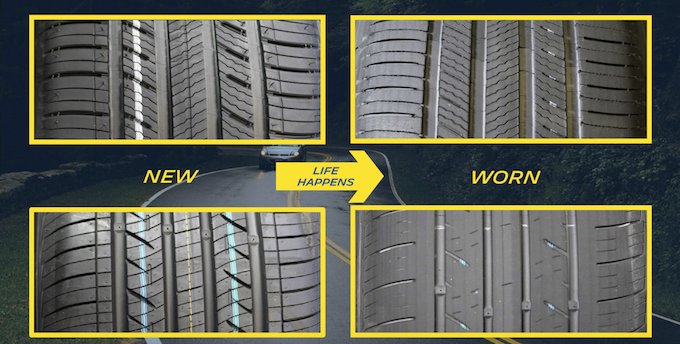
When your tire treads are worn, your car may respond poorly in adverse weather conditions like rain and snow. With good treads, your car will grip the road better. Also, having insufficient tread is considered illegal in many states. And finally, worn treads can make other parts of your car wear prematurely.
Potential Problem Areas:
When it’s time to change your tires, your Firestone Complete Auto Care dealer wants to make purchasing a new set as simple as possible.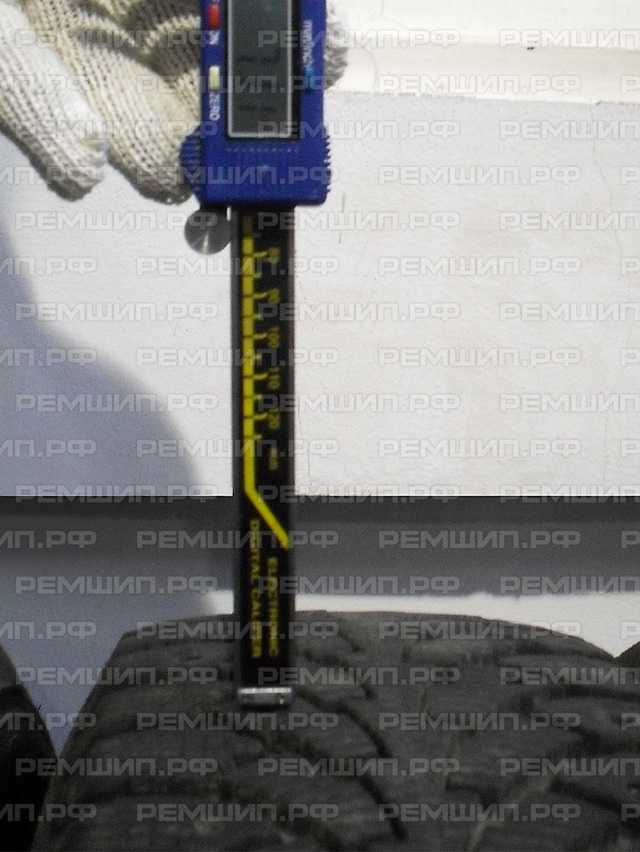 We have the best selection of quality tires to fit your vehicle, your budget and your driving style. From economy to ultra high performance tires - in the size you need from brands you trust, including our well-known Bridgestone and Firestone brands - you can find what you need right here.
We have the best selection of quality tires to fit your vehicle, your budget and your driving style. From economy to ultra high performance tires - in the size you need from brands you trust, including our well-known Bridgestone and Firestone brands - you can find what you need right here.
Make a selection from the following options:
Shop for Tires
Find a Store Near You
Schedule an Appointment
{{storeNumber}}
{{storeName}}
{{link-icon "Call Us" mobileCallLink null "call-cta"}} {{link-icon "Directions" directions "_blank" "directions-cta"}}
{{address}}
{{city}}, {{state}} {{zip}}
{{#if activeFlag}} {{#ifCond mystore "or" myPreferredStore}} {{#ifCond storeType 'eq' "TPL"}}
*Call store for appointment {{phone}}
{{else}} {{#if onlineAppointmentActiveFlag }}
{{#if myPreferredStore}}
{{else}}
*Call store for appointment {{phone}}
{{/if}} {{/ifCond}} {{else}} {{#ifCond storeType 'eq' "TPL"}}
*Call store for appointment {{phone}}
{{else}}
Schedule Appointment {{#if onlineAppointmentActiveFlag}} {{else}}
*Call store for appointment {{phone}}
{{/if}}
{{/ifCond}} {{/ifCond}} {{else}}
*Temporarily Closed Due To: {{temporarilyClosedReason}}
{{/if}} {{#if isMilitaryStore}}
*This location is on an active US military base.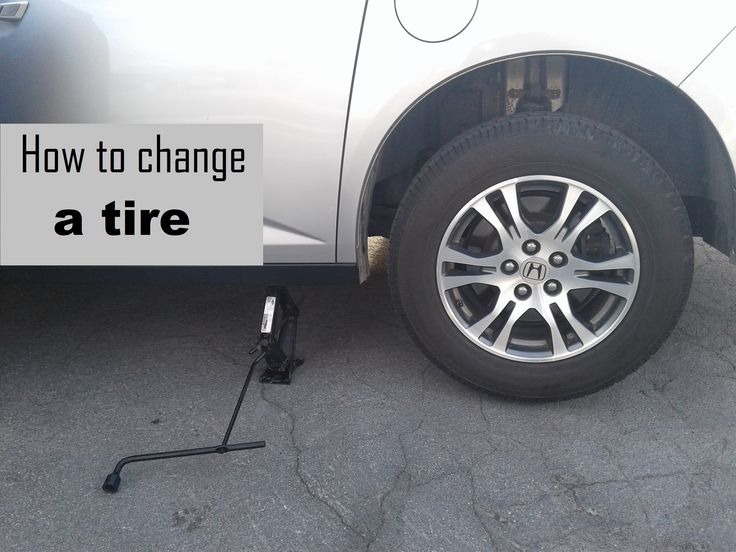 You may need military ID to access the location.
You may need military ID to access the location.
{{/if}}
In the off-season, car owners need to “change shoes” for the car. Decided to buy a new set of tires? We recommend that you learn about the differences between car rubber treads.
The tread is the surface of the tire in direct contact with the road. The tread has a pattern, which is determined by the type and direction of special grooves. The use of a pattern improves the grip of car tires with the road surface and helps with handling in different weather and seasons.
The choice of the type of tire tread pattern should be based on the nature of the ride, the quality of the roads and the climate.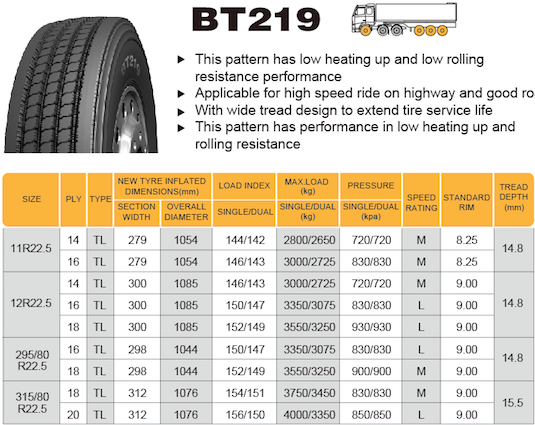 The safety of the trip depends on this, as well as the rate of wear of automobile rubber.
The safety of the trip depends on this, as well as the rate of wear of automobile rubber.
Two parameters are responsible for the differences in the types of tire tread pattern:
The directionality of the tread pattern indicates whether the grooves have a common vector. So, for directional tires, it is one - V-shaped and “looks” in one direction.
The symmetry of the pattern indicates the uniform order of the block of grooves on the left and right side of the tire. So there is a division into the inner and outer parts of the tires.
The combination of both parameters makes it possible to distinguish several types of tread pattern:
This is a tread with a uniform pattern over the entire surface of the tire. There is no direction, no strictly defined sides. These are versatile and reliable tires at a low price. The advantage will be ease of installation and interchangeability (easier to control wear). It's also perfect for a spare.
There is no direction, no strictly defined sides. These are versatile and reliable tires at a low price. The advantage will be ease of installation and interchangeability (easier to control wear). It's also perfect for a spare.
Create this type of tread for both summer and winter tires. However, the most popular use is in the dry and warm seasons. Rubber with a symmetrical non-directional pattern is suitable for those who care about the convenience of controlling the machine, rather than speed characteristics. If most of the planned trips are quiet driving in the city, choose this tread pattern.
Among the shortcomings are weak controllability at high speed and during precipitation. Getting the wheels into a puddle on the track on such tires is fraught with loss of controllability.
Tires with this tread are the basic equipment of most new cars. The non-directional pattern, uniform across the entire width, is also used for off-road vehicles with a mixed driving cycle.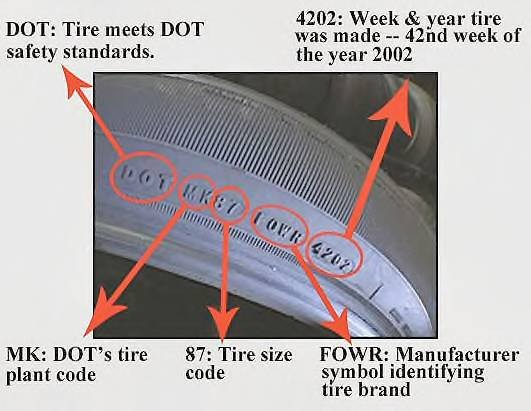
Symmetrical directional tires are easy to recognize as they have a distinctive herringbone pattern along the tire width. The clear direction of the grooves is designed to drain water, snow mass and dirt at the point of contact of the tire with the road surface. These tires are recommended for rear-wheel drive cars that are more prone to skidding on wet pavement or snowy roads.
When mounting these tires, follow the rule: the top of the herringbone must touch the road first during rotation, that is, look in the direction opposite to the movement of the car. For convenience, most manufacturers indicate tips on the sidewall of symmetrical directional tires: an arrow for the direction of rotation and the inscription "Rotation". This avoids incorrect installation.
Summer directional tires require full traction, so it's best not to use them on the dirt road. Among the disadvantages of directional tires note the noise.
Asymmetric tires are used to improve vehicle speed and maneuverability. They have two sides: the outer part of the tire is made of rubber with a rougher texture, as it experiences greater loads than the inner one. This gives better handling in corners and when changing lanes at speed.
Smaller tread blocks and wide grooves on the inside. This wicks away water better and improves traction.
For correct installation, manufacturers sign the inner (Inside) and outer sidewalls (Outside).
These tires are distinguished by high cost. The purpose of the application is driving high-speed cars on asphalt.
The rarest type of tread pattern. It combines all the positive qualities of other types of patterns: it perfectly drains water, keeps speed, and does not deform during difficult turns. There is a longitudinal rib in the middle part of the tread - it helps to maintain high directional stability. The use of such tires is optimal for those who need the same handling, both in dry and wet weather.
The use of such tires is optimal for those who need the same handling, both in dry and wet weather.
Tires with an asymmetric directional pattern are not universal: they require special care during installation. It is necessary to take into account not only the inner and outer sides, but also the direction of movement of the wheel.
The tread pattern and tire composition varies depending on the season.
Summer tires have a harder tread compound than winter tires to combat aquaplaning (loss of grip on wet roads) and achieve high handling performance.
The tread pattern of winter tires has blocks cut into smaller elements by several grooves. This gives the tire softness (so as not to “dubela” in the cold) and increases grip on slippery roads. Winter tires are divided according to the type of tread pattern into two types:
This is a pattern with rectangular and diamond shaped blocks.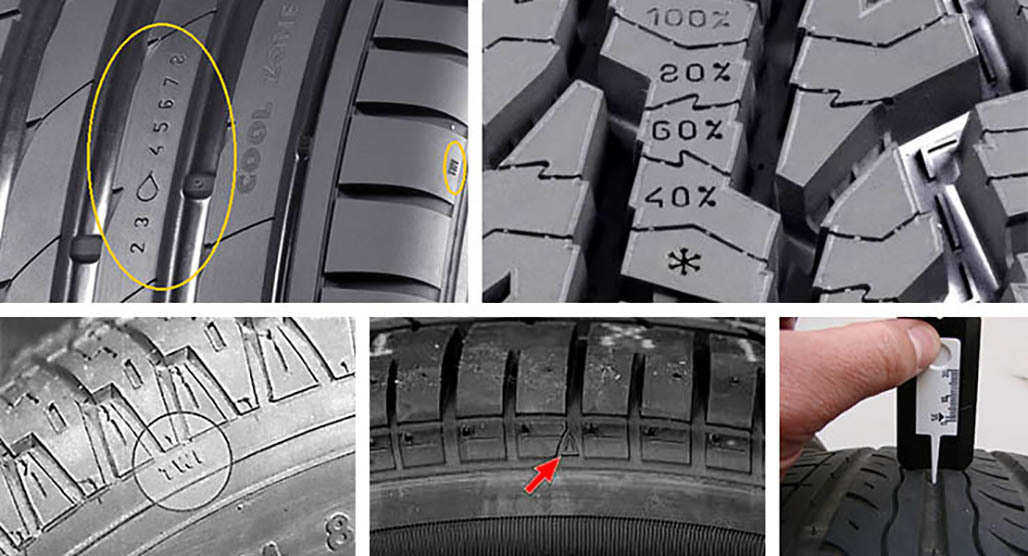 At the same time, the distance between the tread elements is quite large. The side edges are sharper. The structure is softer than European tires.
At the same time, the distance between the tread elements is quite large. The side edges are sharper. The structure is softer than European tires.
The 'rough' pattern allows the tire to easily break through ice or snow, prevent mud from sticking and brake better on ice - good for poor-cleared streets and out of town.
Designed for mild winters and cleared roads. In heavy snow on European tires it will be problematic to move.
These tires effectively remove snow and water. The drawing is not rough, and the edges have a smoother transition. European rubber is harder - the use of a harder material increases wear resistance. Tires of the European type "live" for about 5 seasons, unlike the Scandinavian ones, which need to be changed every 2-3 seasons.
Studded winter tires can be used for extra stability when driving on snowy and icy roads. It is convenient if the weather is changeable in winter, and ice can occur at any time, and roads are cleaned irregularly.
It will be useful for a couple of winters to ride on "thorns" and novice drivers.
The disadvantages of studding include noise and increased stopping distance on clean asphalt. On ice, the braking distance, on the contrary, decreases.
Thinking about buying new tires for your car? Do not underestimate the importance of choosing the right tread pattern - it affects the handling of the machine both in dry weather and during rain or snow. Choose new tires in our catalog!
The height (also called depth) of a tread (or tire tread) is the distance from the bottom of the drainage channel to its surface that is in direct contact with the road. This value can be different even within one specific tire - the height in the center of the tread may not coincide with the height in the shoulder areas. Therefore, the tread height must be measured where there are tread wear indicators set by the manufacturer.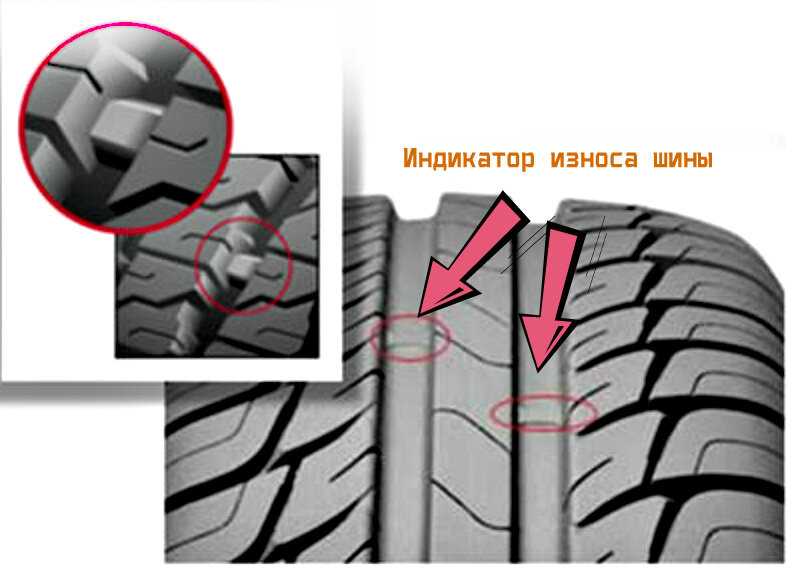
The tread height also bears the functional imprint of the tire as a whole. If, according to the definition, the tread is an element that protects the internal structure of the tire, then, working with the tread height, the manufacturer creates its pattern and forms a system of drainage channels, giving the tread the necessary characteristics.
Not surprisingly, the tread heights of the new tires currently on the market vary. But besides the manufacturer's approach, there are other factors that affect the height of the tire tread:
Seasonal
Functional
It is also worth remembering that only one value is fixed by law for the tread of new tires - the minimum allowable tread height. This means that there is a standard for tread height only for used tires. This standard is the minimum allowable limit, below which the use of tires is prohibited.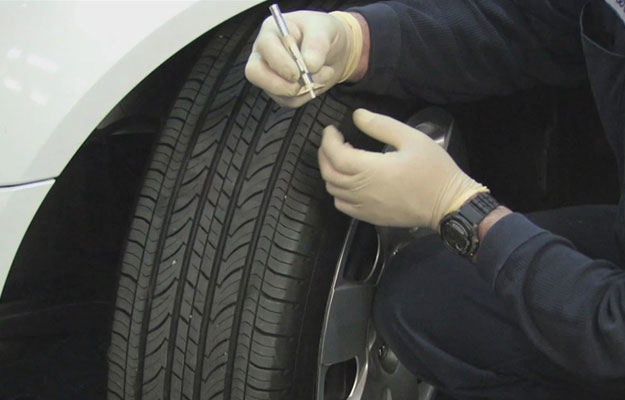 On the territory of Russia, the minimum allowable (residual) tread height for summer tires is 1.6 mm, and for winter tires - 4 mm.
On the territory of Russia, the minimum allowable (residual) tread height for summer tires is 1.6 mm, and for winter tires - 4 mm.
The absence of a tread height limit on new tires allows manufacturers to actively work with other tire elements such as rubber compounds and internals to achieve optimum tire performance. Because the height of the treadmill can have a positive effect on some characteristics and, at the same time, a negative effect on others. So, for example, a tire with a high tread, and therefore with deep drainage channels, will effectively drain water, but at the same time it will be worse to drive . The situation is reversed with a tire that has almost no tread pattern - with a slick tire. In this case, the tire will demonstrate excellent handling, but will be completely helpless on the road, even with minimal precipitation. Therefore, work with the tread height is carried out by tire engineers only in combination with other elements of the tire, which makes it possible to improve certain characteristics of the tire without reducing its other indicators.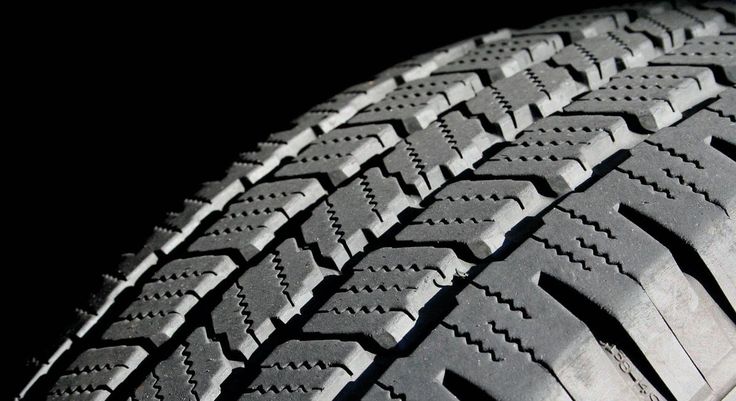
A good example of such interaction is tire mileage . In the initial period of the existence of tires with a tread, it was its height that determined the potential mileage. And, the higher the tread was, the more rubber it had, which means that the tire could cover more kilometers. At the present stage, for leading tire manufacturers, the mileage is determined by the composition of the rubber compound and the recipe for its creation. Therefore, you should not focus on the tread height as the only indicator that determines the amount of potential tire mileage.
Summing up, it must be said that the tread height in the same size, but for different manufacturers, may differ, which is determined by the technical and technological level of each company, as well as its approach to creating a tire. The tread height of one model can also vary from size to size, and narrower sizes will usually have a higher figure.
In winter, drivers may encounter more pavement than in summer.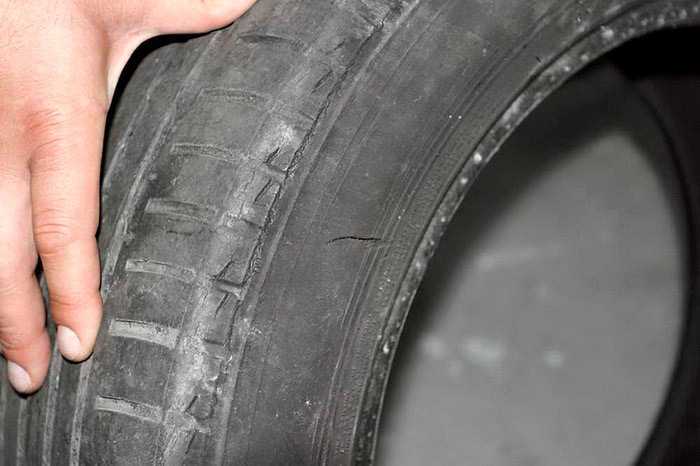 And to dry and wet asphalt, a road covered with ice and snow, snow porridge or a chemical reagent will be added. Most of these coatings require a tire of of an extensive system of drainage channels and powerful tread blocks , which leads to an increase in the negative profile of the tire (this is the total size of all tread channels), as well as an increase in its volume, which is achieved by increasing the height of the tread. In addition, the need to attach spikes also requires a tread with an increased height. And do not forget that the minimum allowable tread height for winter tires is much higher than the summer limit (4 mm versus 1.6 mm). All this leads to the fact that0122 winter tire tread has a large tread height (or depth).
And to dry and wet asphalt, a road covered with ice and snow, snow porridge or a chemical reagent will be added. Most of these coatings require a tire of of an extensive system of drainage channels and powerful tread blocks , which leads to an increase in the negative profile of the tire (this is the total size of all tread channels), as well as an increase in its volume, which is achieved by increasing the height of the tread. In addition, the need to attach spikes also requires a tread with an increased height. And do not forget that the minimum allowable tread height for winter tires is much higher than the summer limit (4 mm versus 1.6 mm). All this leads to the fact that0122 winter tire tread has a large tread height (or depth).
Tread height:
- winter studded tire 9-10 mm
- winter non-studded tire 7.5-9 mm
- summer road tire 7.9-7.8 mm
from the purpose (functions) of the bus.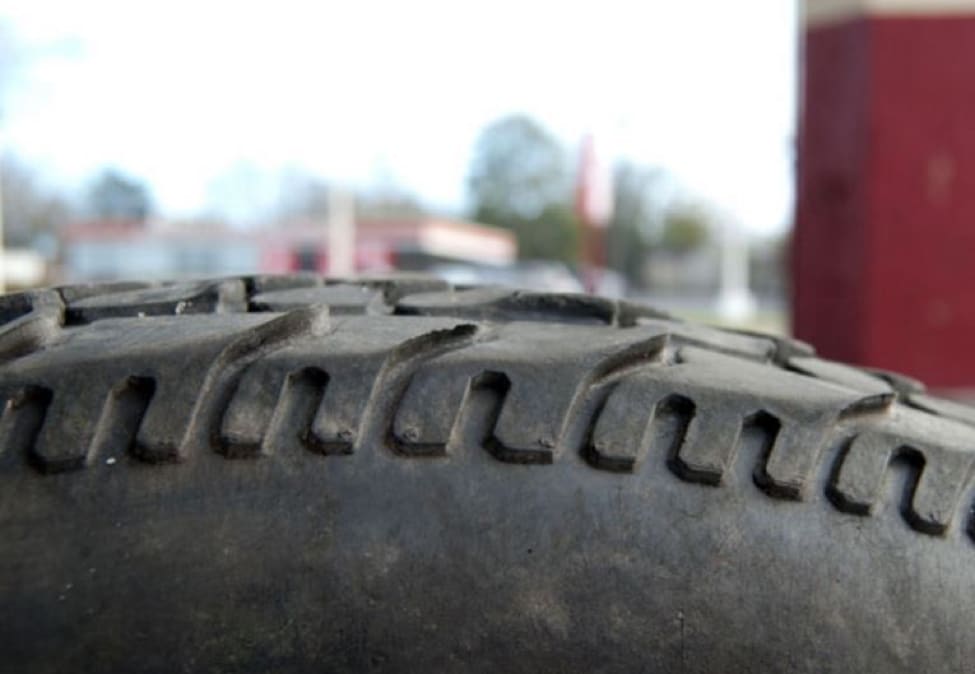
Tires have a variety of uses as there are different vehicles, driving styles, different types of surfaces and frequency of use. Not surprisingly, tires for different uses also have different tread heights.
Summer tire tread height:
- road tire 7.2-7.8 mm
- sports tire 6.5-7.5 mm
- commercial vehicle tire 8-10 mm
- off-road tire 13.7-14.7 mm
Sports tires have a lower tread height than conventional road tires for better handling.
Commercial tires have a higher tread which allows them to have more wear rubber , which means a higher resource. In addition, the deep tread pattern allows you to work more efficiently outside the asphalt pavement.
Off-road tires lead the way in tread height as the surfaces become more aggressive and the higher tread height will help protect the tire from tread damage.